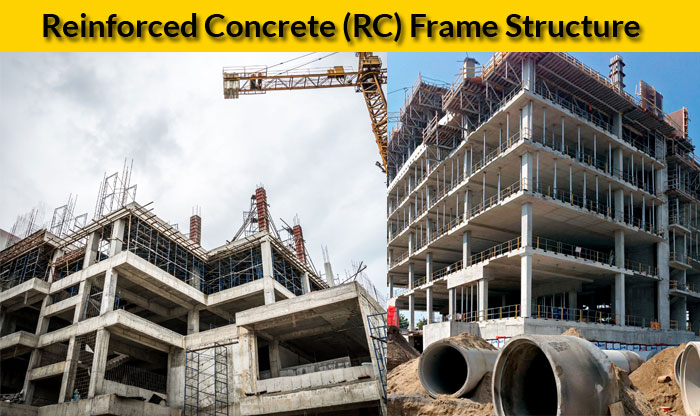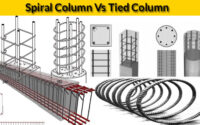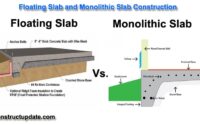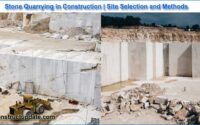What is Reinforced Concrete Frame | Framed Concrete Structure Types | RC Frame Advantages, Disadvantages
This article will guide you through reinforced concrete frame structures, types, advantages, and disadvantages.
What is a Reinforced Concrete Frame?
The reinforced concrete frame is a superstructure made up of horizontal and vertical components, such as columns and beams.
The entire structure, including the beams and columns, is monolithic, meaning the entire structure is cast in a single operation.
This concrete frame is sometimes referred to as the skeleton of the entire construction. The vertical elements, or columns, of this structure, support the whole load of the building, making them the most significant part of this style of construction.
If a beam or slab of this construction is damaged, just one floor is affected; however, if columns are damaged, the entire structure is ruined.
This is a reinforced structure in which the entire structure is reinforced with steel since steel cannot carry the entire tensile load of the structure, and the compressive stress is shared by both concrete and reinforcement.
The Most Important Components of a Concrete Frame
1. Framed Structure Columns
A framed building’s columns are critical structural members. They are the vertical members that transport and transfer loads from the beam and upper columns to the footings.
Axial or eccentric loads can be carried. Columns are more significant than beams and slabs in terms of design. This is because if one beam breaks, it will only affect one floor, however, if one column fails, the entire structure may collapse.
2. Beams
The horizontal load-bearing elements of the framed structure are called beams. They support slab loads as well as the direct loads and self-weights of masonry walls.
3. Slab in Reinforced Concrete Frame
A slab is a horizontal flat surface used to protect a building from the elements and provide shelter for its occupants. These are the plate elements, which flexure to carry the loads. They are usually used to transport vertical loads.
Because of their huge moment of inertia, horizontal loads can carry large wind and earthquake forces and then transfer them to the beam.
4. Foundation in Reinforced Concrete Structure
The foundation’s main purpose is to transfer the load from the above-mentioned columns and beams to the solid ground.
5. Shear Walls in Framed Structure
In high-rise buildings, these are crucial structural features. Shear walls are actually very massive columns that appear to be walls rather than columns because of their size. They are responsible for horizontal loads such as wind and earthquakes.
Advantages of a Reinforced Concrete Frame Structure:
- They are superior in compression and tension when compared to most other construction materials.
- Its fire resistance is superior to steel, allowing it to withstand fire for extended periods of time.
- It has a long service life and requires little maintenance.
- It is the most cost-effective structural material in some constructions, such as piers, dams, and footings.
- It can be moulded into any shape, making it the most cost-effective structural material.
- It produces stiff members with the least amount of deflection.
- Steel’s yield strength is around 15 times that of structural concrete’s compressive strength and well over 100 times that of its tensile strength.
- The cross-sectional dimension of concrete would be lowered if steel was used.
- In comparison to other structural systems, erection requires less experienced labourers.
Disadvantages of Reinforced Concrete Frame Structure:
- It necessitates meticulous mixing, casting, and curing, all of which have an impact on the member’s final strength.
- Formwork, which is used to cast concrete, is relatively expensive.
- It has a lower compressive strength than steel, resulting in huge sections of columns/beams in multistory buildings, the formation of cracks in concrete owing to shrinkage, and the application of live loads.
- If the concrete is not properly laid, the steel begins to corrode, losing strength and, as a result, life. Repairs are also extremely costly and complicated.






